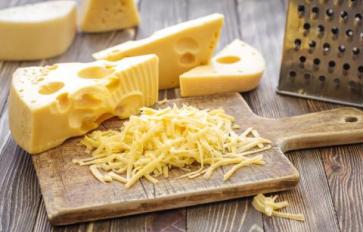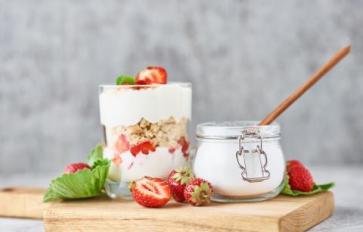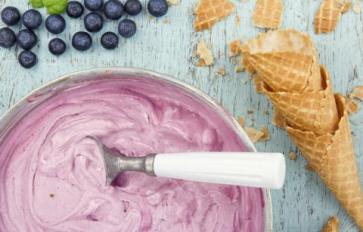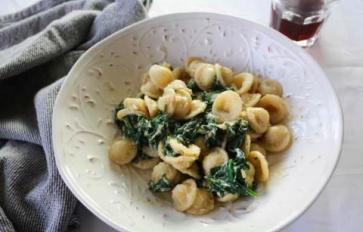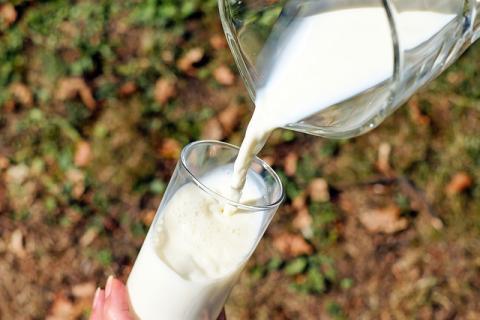
What I thought was lactose intolerance turned out to be intolerance to pasteurized milk…
Louis Pasteur may have started out on the right track in his bid to make raw milk a safe and microbe-free drink that people could enjoy, without the fear of food poisoning, or worse, bovine-borne diseases. Enter pasteurization – a technique that kills all the harmful bacteria that is passed from the bovine to the milk. But is pasteurization really making the milk better? Or is it throwing the baby out with the bathwater by killing all the goodness of milk too? Case in question: me.
My itchy, scratchy story
Milk is good for you, said my strict disciplinarian of a mother to me, and being a good girl – I drank my daily quota ever since I was in pigtails. Frankly speaking, I liked and still like milk. Those were the days where the tetra pack revolution had not hit India. Milk either came from the local milkman who sold milk by the liter that you had to collect in a utensil yourself, or it came in branded polythene packs. Since the milkman could not be trusted and often diluted the milk with water among other things, we went for the packet milk. Branded pasteurized milk, with the expiry date clearly in view, was further boiled to make the milk safe.
All through childhood I had sporadic cases of hives and a few of my worst memories are around the same. Somehow they always happened when I had to look my best – the prom, a stage appearance, a family wedding. When I hit 20, the hives became far more persistent and aggressive – not a day would go by without me scratching welts into my skin. The doctors called it an immunoglobulin imbalance and suggested I stay away from eggs, chicken and meats, and prescribed an anti-histamine for me as well. But I realized it to be a lactose allergy only when I went on a trip and stayed off milk for a fortnight, and no hives happened even though I ate like a carnivore.
For a few years I gave up milk -- in fact I gave up dairy products on the whole. Then tetra packs were introduced in India and I started tentatively drinking double toned milk by Nestlé. As long as I had just half a cup, and had skimmed milk yogurt, I was fine. More dairy than that and it was back to itchy, scratchy me.
A year and a half ago, we moved back to my husband’s hometown – Dehradun, a city in the foothill of the Himalayas. There, everyone seemed to be buying milk fresh off home farms, straight from the source. The milk is then boiled, cooled and refrigerated for consumption. At my mother-in-law’s insistence, I started having a glassful. To my surprise (and delight), the hives never happened. I drink the milk, I eat the yogurt made from the milk and even eat the butter and ghee (clarified butter) made from its cream. No hives, period.
Further research led me to a surprising conclusion. I’m not allergic to milk. I am unable to digest pasteurized milk. Why? It’s because pasteurization all but destroys milk’s natural enzyme lactase, thus making it indigestible to many. The consequent immunoglobulin imbalance presents itself as lactose intolerance symptoms such as, but not limited to, hives, diarrhea and general digestive tract irritability.
What is pasteurization?
We’ve all learned this in grade school but let’s just recap what pasteurization actually is. Pasteurization is the process of heating foods to a certain temperature so as to kill all the pathogenic (harmful) organisms in them in order to make them safe for consumption. It’s an industry-regulated procedure, where the temperatures needed to make the food safe are considered very, very important. Milk by itself is a raw food and may contain harmful pathogens such as salmonella, listeria and E. coli – pasteurization eliminates these from the milk and makes it safe to drink.
Pasteurized vs. Unpasteurized Milk
So obviously, pasteurized milk is safe, as all the pathogens that could have been in it have been eliminated. Unpasteurized milk, on the other hand, could be brimming with these rather nasty pathogens that can cause a host of diseases. The problem with pasteurized milk lies not in its safety, but in the fact that pasteurization as a process alters all of the nutrients in milk. Studies conducted by many reputable journals have proven that pasteurization not only causes a reduction in the nutrient level of milk, but also changes some of the nutrients to the point of our bodies not being able to use them at all. Listed below are some comparison points:
- One of the prime examples is that of the milk enzyme lactase – pasteurization nearly eliminates this from milk – thus giving rise to more and more cases of, you guessed it, lactose intolerance. In fact, in a study conducted by the Weston A. Price Foundation it was found that 80% of the people suffering from lactose intolerance found their condition improved by consuming unpasteurized, raw milk (in a study of 700 families).
- Pasteurization denatures whey proteins and damages the immunoglobulins thereby making them far less effective than what they are in raw milk.
- As opposed to 100% in raw milk, pasteurized milk causes percentage reduction in various vitamin levels – vitamin A by 35%, vitamin C by 25-77%, vitamin E by 14% and B-complex vitamins by 38%.
- Similarly, as compared to raw milk, the reduction in mineral levels in pasteurized milk is calcium by 21%, zinc by 70% and iron by 66%.
The conclusion: choose your next glass with care. And remember that if you are lactose intolerant, pasteurization might be to blame rather than the milk… As for me, I am blessed to have switched to raw milk, as is my entire family, including my two kids. Of course, this is not me trying to make your decision for you; this is me simply stating my story, and my decision.
We’d be happy to hear your comments on this, and would appreciate any and all debates…

